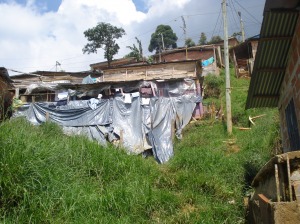A Tale of Two Cities: First Impressions of Medellín, Colombia
November 28, 2010
When I first told my father that Kiva had placed me in Medellín, he asked, “you mean the drug and murder capital of the world?” Er, um, not anymore! I don’t think….
Medellín is, in many ways, two different cities in one—and a place that faces far more nuanced challenges than its tarnished reputation implies.
On the one hand, it is a city of beautiful, young socialites. The women here are simply stunning, and a night out in the Zona Rosa is enough to make even the staunchest objector consider the benefits of a spray tan and plastic surgery. All of the pretty young things, men and women alike, float about the city, focused on the dual goals of sexual conquest and being seen at the hottest club. One hostel owner told me that I should give up any hopes of meeting a nice gentleman here because there was just too much competition. Thanks a lot, buddy. But, beyond la vida loca, Medellín offers a clean and speedy metro system, potable water (!), police officers on most corners, sushi and designer shopping malls.
But there is a contradiction here, something Dionysian brewing beneath the apollonian surface first visible to a foreigner. The vast majority of Medellín’s residents do not prance about this world. Medellín is, of course, known for its involvement in the drug trade, for the violence that this illegal export inspired, and for guerillas who have kidnapped more that just a few foreigners. Generally speaking, those days are over. The Medellín of today is a much safer and more welcoming place than it was in Pablo Escobar’s heyday. That said, the city remains haunted by its past, and struggles with issues common to much of the developing world: unemployment, lack of access to healthcare and education, and high poverty levels. For example, 47% of Colombia’s population falls below the poverty line and the country is considered the 9th most unequal in the world with respect to income distribution, slightly better than Brazil and slightly worse than Haiti. Or one can take a more anecdotal approach. A few days ago I visited La Cruz, a neighborhood high up in the hills of Medellín, home mostly to individuals (read: widows) who have been misplaced due to violence. One woman I met had lost her first home in an act of violence that also took the life of her husband. Her second home had been burned to the ground. And then there are the teenage pregnancies. In two hours I saw at least ten teenage girls who were pregnant, a few of which couldn’t have been older than 12.
 An Interactuar consultant headed to visit a client
An Interactuar consultant headed to visit a client

Precarious housing in the neighborhood of La Cruz
But there is something else going on in Medellin as well, something I haven’t been able to put my finger on quite yet. It is some combination of religious and social conservatism (despite the party hopping elites) and of a population still struggling with its identity after the violence that has only recently come to an end. I can only imagine that what I have seen is the tip of a very large iceberg.
It is in this context that I introduce Interactuar, a large microfinance institution (MFI) that has recently partnered with Kiva, and is Kiva’s second partner in Colombia. For almost thirty years, the organization has served the state of Antioquia (where Medellín is located) and is one of the most well respected institutions in town. Armed with the knowledge that residents of Antioquia are yearning for chances to innovate following the checkered past of the region, Interactuar offers far more than microcredit. They offer microinsurance, comprehensive consulting services for established businesses, classes ranging from how to sew to how to be a butcher, a start-up center for new entrepreneurs, a design center for clients to get packaging and marketing materials, and a nutrition lab where clients can get their products tested for nutritional content and print nutrition labels. Interactuar is one of the few institutions I have come across in the world of microcredit that has truly captured the spirit of educating and empowering people to gain the full benefit of financial services. Put simply, Interactuar operates on the assumption that microcredit alone is not enough to alleviate poverty.
Indeed, in landscape as complicated as Medellín, this assumption appears to be a good one. These next three months promise to be interesting as I find out just how deep this iceberg goes. Stay tuned….
P.S. Interested? Check out Interactuar’s brand new new lending team here!
Betsy McCormick, KF12
PREVIOUS ARTICLE
Prohibition during Ecuador’s census weekend. →NEXT ARTICLE
Mongolian Independence/Constitution Day, A Short History Lesson →













